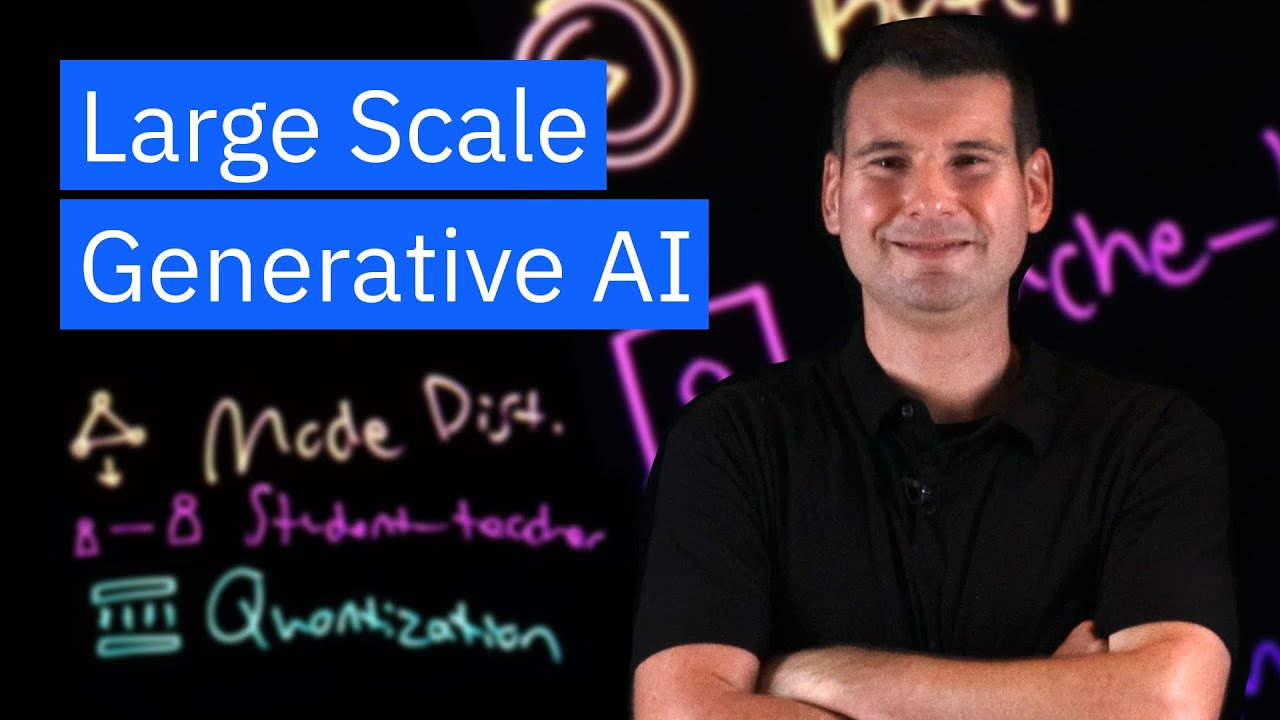The video explores the exponential growth of Large Scale Generative AI, highlighting the challenges posed by increasing model size, data requirements, and user demand, which necessitate advanced computational strategies. It discusses various approaches to scaling these systems, including batch-based and cash-based generative AI, agentic architecture, and model quantization, to enhance efficiency and manageability in real-world applications.
The video discusses the challenges and exponential growth associated with Large Scale Generative AI, focusing on three key areas: model size, data size, and demand. Initially, generative AI models had thousands of parameters, but they have evolved to contain millions, billions, and even trillions of parameters. This increase in model size necessitates advanced hardware for training and running these complex algorithms. Additionally, the data size required for training these models is also expanding rapidly, with algorithms capable of processing vast amounts of information far exceeding human capabilities. By 2030, it is anticipated that synthetic data may surpass real-world data.
The demand for generative AI has surged, as evidenced by the rapid user adoption of platforms like ChatGPT, which gained one million users within five days of its launch and reached 100 million users within a year. This growing reliance on generative AI models highlights the need for efficient systems to manage the overwhelming computational requirements. The video emphasizes that the combination of increasing model size, data size, and user demand results in an unfathomable scale of computation necessary to operate these systems effectively.
To address these challenges, the video introduces several strategies for scaling generative AI algorithms. One approach is a batch-based generative AI system, which involves creating dynamic fill-in-the-blank sentences from large language models and caching them on a global Content Delivery Network (CDN). This method allows for personalized user experiences while reducing the computational load. Another strategy is cash-based generative AI, which focuses on caching common content to minimize on-demand generation, effectively balancing efficiency and personalization.
The video also discusses the concept of agentic architecture, which involves breaking down large, complex models into smaller, specialized models that can communicate with each other. This approach allows for more manageable computations and can be scaled across various GPU types. Techniques such as model distillation and the student-teacher approach are highlighted as methods to enhance the performance of smaller models by extracting essential information and developing new skills through interaction with larger models.
Lastly, the video touches on model quantization as a technique to reduce the size of models while maintaining accuracy. This process can be applied either before or after training, each with its own trade-offs regarding computational requirements and accuracy levels. Overall, the video emphasizes the importance of developing efficient architectures and strategies to make large-scale generative AI more manageable and usable in real-world applications.
Want to play with the technology yourself? Explore our interactive demo → watsonx.ai Interactive Demo
Learn more about the technology → IBM watsonx.ai
AI news moves fast. Sign up for a monthly newsletter for AI updates from IBM → https://ibm.biz/BdKMLz
